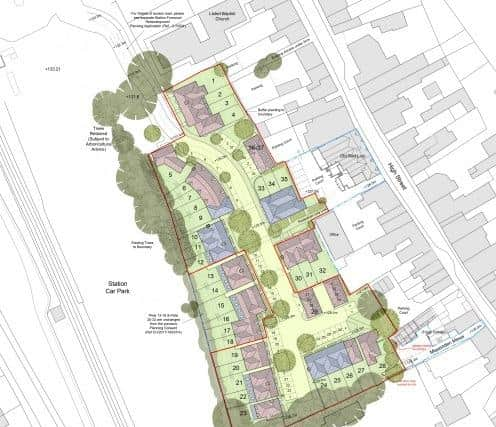The bustling town of Aylesbury is bracing itself for significant travel disruptions as a crucial thoroughfare into the town is […]
In a fervent display of community solidarity, residents of Bucks village and Great Missenden have voiced their strong opposition to plans for two new housing projects that threaten cherished green spaces within their locality. The proposed developments have sparked a wave of concern, uniting villagers in a collective effort to preserve the natural landscapes they hold dear.
Residents Stand Firm Against Green Space Development
The heart of Bucks village is currently under siege by developers seeking to transform its lush green spaces into residential areas. Local inhabitants have been vocal in their resistance, emphasising the importance of these green havens for recreational activities, mental well-being, and the overall environmental health of the community.
"These green spaces are more than just patches of land; they are the lungs of our village, providing us with clean air, a place to unwind, and a habitat for local wildlife," one resident passionately stated during a recent town meeting. "Sacrificing them for housing would be an irreversible loss."
Great Missenden's Beloved Green Space Under Threat
Similarly, in Great Missenden, a revered green space is at the center of controversy as plans emerge to overhaul it to accommodate several new homes. This proposal has not sat well with the locals, who cherish this area as a vital community hub and a serene escape from the bustle of daily life. The concerned citizens have mobilised, initiating petitions and organising protests to voice their disapproval.
"Transforming our beloved green space into housing would strip away a part of our community's identity," a long-time Great Missenden resident lamented. "We must protect these areas for future generations to enjoy."
Environmental and Community Impact

Critics of the housing projects argue that the developments could lead to significant environmental repercussions, including increased pollution, loss of biodiversity, and strain on local resources. Moreover, the socio-cultural impact cannot be ignored, as these green spaces often serve as vital communal areas where residents gather for events, exercise, and relaxation.
"The potential environmental impact is alarming," noted a local environmentalist. "Once these green spaces are gone, we can't get them back. It's crucial to consider sustainable alternatives that protect our natural heritage while addressing housing needs."
Seeking Solutions
While the need for additional housing is acknowledged, the residents of Bucks village and Great Missenden are calling for a more balanced approach that considers the long-term sustainability of their communities. Many have suggested looking into brownfield sites or under-utilised urban areas as viable alternatives for new housing developments.
The ongoing debate highlights the delicate balance between development and conservation, raising important questions about how communities can evolve without sacrificing their natural and cultural assets. As the situation unfolds, both sides remain hopeful for a resolution that honors the preservation of green spaces while addressing the demand for new homes.
Conclusion
The resistance shown by the residents of Bucks village and Great Missenden against the proposed housing projects underscores a broader sentiment shared by many communities facing similar challenges. As development pressures mount, the pushback from these villages serves as a reminder of the intrinsic value that green spaces hold, not just for environmental health but for the social fabric of communities as well.